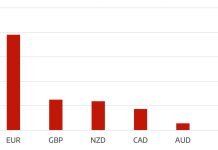
As the digital landscape evolves, so does the necessity for advanced communication technologies in the business environment. Computer Telephony Integration (CTI) is a pivotal innovation that bridges the gap between computers and telephone systems, enhancing the efficiency of communication channels. This technology underpins many applications and services in contemporary business settings, allowing them to integrate telephone functions with computer-based data seamlessly. In this article, we delve into the intricacies of CTI, its role in modern business, and the future it holds in our increasingly connected world. Keep reading to uncover the resilient fabric of CTI and its transformative potential.
Exploring the Basics of Computer Telephony Integration (CTI)

So, what is computer telephony integration? At its core, CTI refers to the convergence of computer systems and telephone systems. Essentially, it facilitates the management of phone calls using a computer interface. This symbiosis means that actions traditionally conducted by a phone, such as dialing, call transferring, or caller identification, can now be performed through desktop applications. CTI allows for more informed and responsive communication, as information is readily available to call handlers at the click of a mouse.
CTI is crucial for businesses looking to streamline their communication processes. By integrating telephony with databases and customer management systems, CTI enables a more personalized and efficient interaction with clients. Customer service representatives gain immediate access to a wealth of client data as calls come in, allowing them to tailor their approach and resolve issues more effectively.
CTI systems are not confined to large enterprises. Small and medium-sized businesses also leverage this technology to compete in the digital age. Even with limited resources, these businesses can provide superior customer service and enhance their communication workflows. In this light, CTI emerges as a democratic tool, making advanced telecommunication capabilities accessible to a broader range of businesses.
Key Features and Capabilities of CTI Systems
CTI systems are packed with features designed to optimize telephonic communication. Call control features such as answer, hang-up, hold, and conference are foundational, providing the rudiments of telephone operations on a computer interface. These essential functions are just the tip of the iceberg when it comes to CTI’s transformative features and capabilities.
Advanced CTI systems also include automatic call distribution (ACD), which ensures calls are routed to the appropriate agents based on predefined criteria. This not only improves the caller’s experience by minimizing wait times and directing them to the most capable agent but also balances the workload among team members. Consequently, this results in more proficient handling of customer queries and increased efficiency within the team.
Screen popping is another powerful feature that illustrates the benefits of CTI. When a call is connected, the customer’s record automatically appears on the agent’s screen, providing immediate context for the interaction. This eliminates the need for time-consuming searches, enabling the agent to provide a more personal and informed response. By harnessing data in this way, CTI transforms how businesses engage with their customers.
Interactive Voice Response (IVR) systems integrate with CTI, further enhancing the caller experience. IVR uses pre-recorded messages and menus to guide callers through options, even offering self-service for common requests. By the time a live agent is engaged, they are equipped with detailed information about the caller’s needs, allowing for swift and effective resolution of the query.
How CTI Integration Enhances Customer Experience

Enhancing customer experience is at the epicenter of CTI’s value proposition. By providing a seamless, efficient, and personalized communication touchpoint, businesses can significantly increase customer satisfaction. A responsive and attentive service is often what distinguishes a good company from a great one, and CTI is instrumental in achieving this level of service.
Utilizing CTI, customer service teams have immediate access to client histories, preferences, and prior interactions across multiple channels. This omnichannel perspective enables agents to understand the customer’s journey and respond more thoughtfully and effectively. When customers feel understood and valued, their loyalty to the brand strengthens.
One of the subtle yet impactful advantages of CTI is the reduction in customer wait times. Since agents have immediate access to relevant information and tools to manage calls efficiently, customers spend less time on hold. This respect for the customer’s time is a critical aspect of service that can set a company apart in a landscape where time is an increasingly precious commodity.
Overall, exploring CTI reveals its indispensable role in curating advanced business communication strategies and enhancing customer experiences. As we venture into the future, continued innovation in CTI promises a landscape where businesses interact with unparalleled efficiency and a personalized approach, all while maintaining the human touch that’s critical to customer connections.
Tradersdna is a leading digital and social media platform for traders and investors. Tradersdna offers premiere resources for trading and investing education, digital resources for personal finance, market analysis and free trading guides. More about TradersDNA Features: What Does It Take to Become an Aggressive Trader? | Everything You Need to Know About White Label Trading Software | Advantages of Automated Forex Trading









































